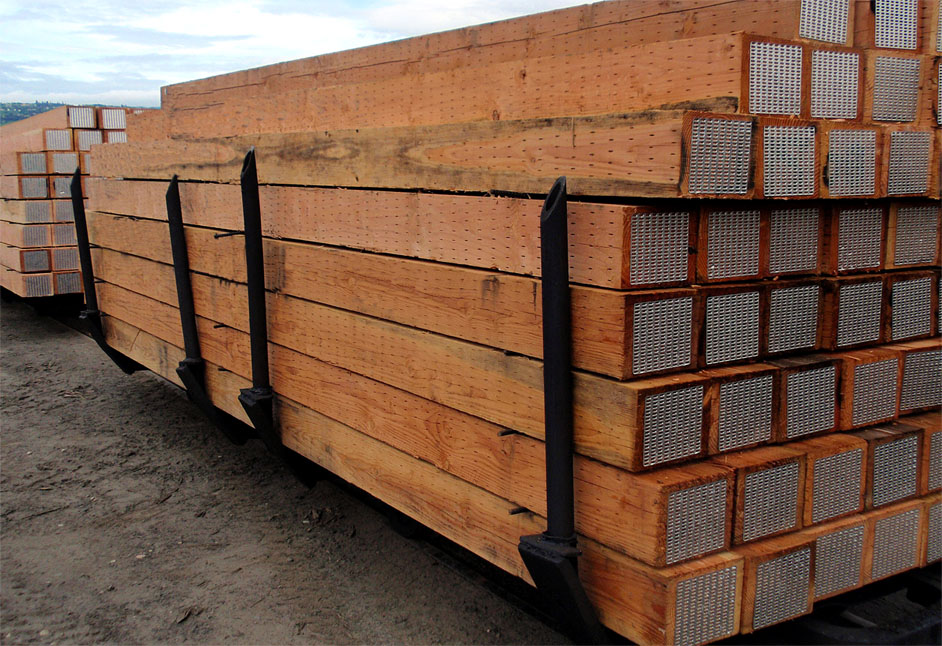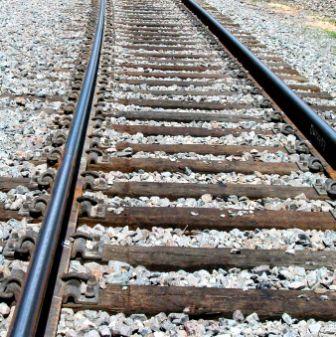Wondering About Membership in RTA?
About RTA What is the RTA? Why RTA? Why should I become a member? Categories What are the RTA Membership Categories? New Member New Membership Application Renewals Current Member Renewals Crossties I would like to see a sample of the Crossties Magazine Specifications RTA Specifications for Timber Crossties and Switch Ties TieGuide The TieGuide: Handbook for Commercial Timbers Used by the Crosstie Industry A wealth of useful information
The RTA is dedicated to improving railroad track systems through appropriate use of treated wood crossties. The RTA works to sponsor research, conduct studies, monitor testing and investigate all aspects of tie production and performance. The results are readily available to you here. Use the information to select the right materials, plan more effective purchasing, design new track systems or replace old ones for maximum productivity and performance. Help with your own research As a contractor or supplier, you may have a specific research need. Talk to us. Our R&D committee will work with you to determine the extent of what the RTA can do to help you. What have we done for you lately? The RTA is focused on finding better ways to extend wood tie life and make track operations more cost effective as track performance demands increase. Recently, the RTA:
What can we do for you now? The RTA is available to provide you with information and recommendations. For answers to questions, for research summaries that you may find useful, for test results that can help you with a tough decision, for solutions to problems, contact the Railway Tie Association. We're eager to help. A word about conservation The RTA is also involved in timber resource conservation and forest management. Our board members act as liaisons with state forestry associations and work closely with these groups to assist and promote sound forestry practices. Although we can't always remedy current supply problems, we can provide you with answers to your questions about what is happening, why it's happening, and what's being done. Looking ahead, the RTA will also participate fully in upcoming testing of under-utilized wood tie species and further studies of fastening systems, in addition to the monitoring and reporting of numerous ongoing R&D in-track projects. Wood – the renewable resource Although treated wood tie supply and costs can be affected by environmental constraints and the demand for other timber products, the production of green, untreated ties is sustainable over time and in adequate quantities to fulfill anticipated demands. As always, wood continues to be our most readily available and renewable resource. According to the US Forest Service, annual hardwood growth has exceed harvest for the last several decades. It’s a natural, abundant material that has stood the test of time. Under today’s tough operating conditions,nothing stacks up to treated wood crossties. Back in the early 1800s when the United States' first railroads were being built, the men engineering the systems quickly found that wood’s superior strength, durability, and resiliency made it the obvious choice for crossties. Now, with track conditions that would positively astound the early railroad builders, wood continues to be the superior crosstie material. And the advantages that made wood the best choice almost 200 years ago are just as compelling today. Wood is extremely strong for its weight. You get superior performance from a material that is easy to handle and economical to transport. Wood is remarkably resilient. Acting as a flexible buffer between rail and ballast, wood crossties can readily withstand heavy loads and take the pounding of out-of-round wheels. Wood crossties are very durable. Even under heavy loads, wood ties are highly resistant to fatigue. Wood offers you the best Using innovation and technology to make a good thing even better Performance demands are getting tougher, and the Railway Tie Association is working to find better ways to extend wood tie life and make track operations more economical. Recent innovations in installation, hardware, and treatment techniques have enhanced wood’s natural benefits to give you a product that is unmatched by any other material. For example, wood’s long life can be made even longer with the use of elastic fasteners. Even under heavy loads in severe service areas, these fasteners reduce plate wear optimize tie performance. Innovative steel end plates and other hardware can minimize or even eliminate splitting and plate cutting for longer, more productive in-track performance and lower maintenance costs. In-track treatment of ties in various track maintenance situations using several chemical solutions at critical rail-bearing areas is showing significant promise in retarding deterioration and extending tie life. Find out how treated wood ties will perform in your track
We hope you agree that membership in the Railway Tie Association benefits Thank you.
|


 life-cycle economics. Wood ties are not only economical to purchase, transport, maintain and install, but they also offer long-term, cost-efficient performance.
life-cycle economics. Wood ties are not only economical to purchase, transport, maintain and install, but they also offer long-term, cost-efficient performance.